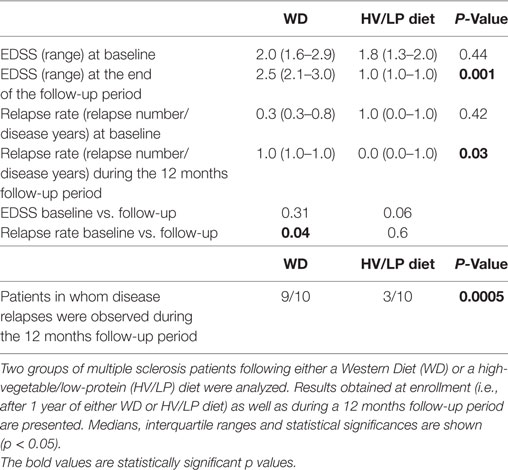25 3.7 Modulation of Disease Activity
Disease modulation in both groups of MS patients was analyzed one year following either the HV/LP diet or the WD, as well as during a 12 month follow-up period.
EDSS Score
EDSS score is an assessment of the disability status of MS patients on a scale from 0 to 10 (Figure 9). The score goes up by 0.5 unit increments that represent higher levels of disability, with 10 being the worst disability status (Çinar & Yorgun, 2018). After comparing baseline and end of the follow up period EDSS scores, a significant difference was observed between the two diet groups. Whereas the EDSS score decreased in the HV/LP diet patients, this parameter increased in WD patients, thus demonstrating better disease outcomes in those following the HV/LP diet (p = 0.001).
![Scaling the progression of disability. EDSS score in MS (published with permission of [11]).](https://www.researchgate.net/profile/Manish_Khare5/publication/235368929/figure/fig1/AS:202537073418240@1425300009276/Scaling-the-progression-of-disability-EDSS-score-in-MS-published-with-permission-of.png)
Disease Relapse
During the 12 month follow up period, the overall number of relapses in the HV/LP diet patients was unmodified, with only three of the ten MS patients relapsing. That being said, the number of disease relapses increased significantly in the WD patients (vs. enrollment p = 0.04). By the end of the follow up period, nine of the ten MS patients from this group relapsed. The difference in relapse rates during the 12 month follow up period within the two groups was statistically significant (p = 0.03).

Expanded disability status scale.
